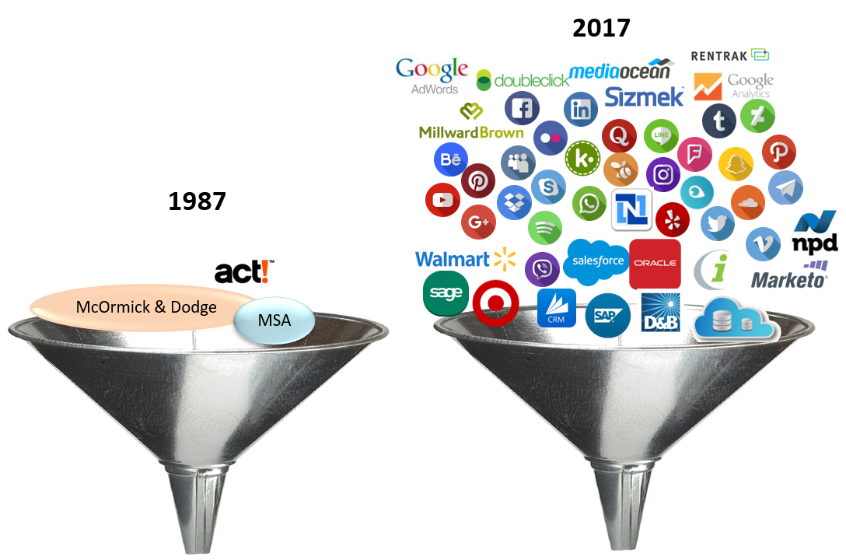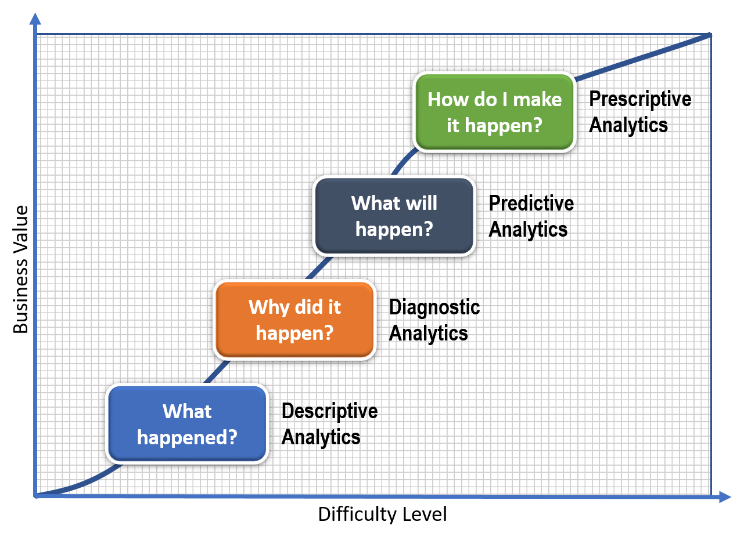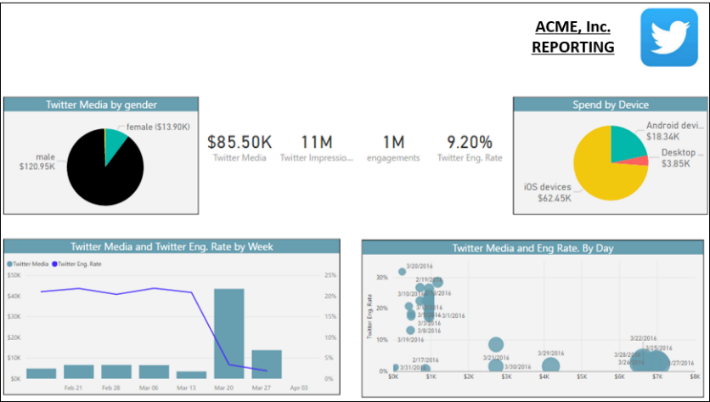Building a User-Friendly Marketing Data Ecosystem
Welcome to the Jungle!
Welcome to today’s Marketing Data Ecosystem. It’s a myriad of data sources and tools that are supposed to help you to make more informed, “data driven” decisions; taking the guess work out of everything from media buying to sales and revenue attribution. That said, in reality, it can seem like a daunting array of ever-proliferating information, technologies, and vendors that makes you wonder: Will it really make my job easier? The buzzwords alone — like Hadoop, BIG Data and Machine Learning — are enough to make your head spin.
 Ideally, your Marketing Data Ecosystem allows you to store, ingest, govern, process, analyze and visualize data. It supports all aspects of data and data technology. So, selecting the right partners, vendors and tools for storing, processing and effectively analyzing these very large data sets is critical to the success of your marketing data strategy. To complicate things further, the options vary from generic tools requiring companies to supply all the know how, to highly expensive enterprise-wide solutions that promise to solve all marketing and advertising technology needs. In between, there are boutique products and service-oriented solutions that focus on specific technology needs or provide unique integrated service offerings.
Ideally, your Marketing Data Ecosystem allows you to store, ingest, govern, process, analyze and visualize data. It supports all aspects of data and data technology. So, selecting the right partners, vendors and tools for storing, processing and effectively analyzing these very large data sets is critical to the success of your marketing data strategy. To complicate things further, the options vary from generic tools requiring companies to supply all the know how, to highly expensive enterprise-wide solutions that promise to solve all marketing and advertising technology needs. In between, there are boutique products and service-oriented solutions that focus on specific technology needs or provide unique integrated service offerings.
Do you know the value of your data?
From an economic perspective, the best way to answer this question might be to look at the values of companies that are driven by data and to note that data adds value. Companies like Uber, Instagram, Twitter and Facebook have market valuations far beyond those of other traditional companies with far greater revenue.
First you need to know which data sets to use and where they’re going to come from. With so much internal and external data available — from structured data from your ERP and CRM systems to unstructured mega data sets from social outlets etc. – the trick to using this “BIG Data” is to discover and extract the “golden nuggets.” This “Data Mining” of valuable customer insights is where science intersects with planning.
What’s relevant to your marketing department is the value of this data once it’s distilled and analyzed. Only then can it deliver a more thorough and insightful understanding of your business and customers. Armed with this information, CMOs can crafted a stronger, more competitive product positioning, which will have a significant impact on the bottom line.
Creating a smarter data funnel
Moving data from its source and making it available to decision makers in a timely, simplified manner is a task that hasn’t fundamentally changed since mainframe days. Yet, while the goal remains the same, the obstacles and complexity to successfully create and maintain a data-driven source of analytical truth has become exponentially more difficult.
 One of the biggest hurdles is the sheer number of new data sources that generate unprecedented amounts of output, often with very little structure. From social media sources to machine and sensor readings, the onslaught of data from multiple channels can be overwhelming.
One of the biggest hurdles is the sheer number of new data sources that generate unprecedented amounts of output, often with very little structure. From social media sources to machine and sensor readings, the onslaught of data from multiple channels can be overwhelming.
Second is the necessity to ensure the cleanliness and accuracy of the data. While a complete master data management strategy is certainly a goal to shoot for, implementing data governance policies and formulating a data cleansing strategy should be your first steps. This leads the way to a basic source of truth for all data in the ecosystem.
Third, the number of tools and technologies currently available, and on the horizon, is both impressive and confusing. Defining a clear understanding of the purpose and benefits you require from a technology is essential to its success.
Analyze This
Separate from data infrastructure technologies, there are tools specifically designed to analyze data. As we noted earlier, analytics make sense of the data. They provide the timely insights needed for strategic decision-making. Today’s tools go beyond spreadsheet data analysis, and make it possible to aggregate massive amounts of data in minutes to uncover potential insights and opportunities. These analytics tools are broken into three primary categories: 
Analytics Platforms – Integrate and analyze data to uncover new insights. This is where the Data Science work is done and the tools vary from simple analysis to complex predictive modeling. These typically powerful, but generic technologies, deliver Descriptive, Diagnostic and Predictive Analytics telling us what happened, why it happened and what will happen next.
Analytics Applications – Can go past generic Analytics tools by being laser focused on a specific category or vertical. For example, a digital media optimization application will ingest and analyze the data. It will also provide descriptive, and diagnostic insights that go further by providing application-specific predictions of what will happen next and recommendations of how to respond (i.e. where you should put your media funding).
 Visualization Platforms – This is where the rubber hits the road in analytics. Specifically designed- as the name might suggest- for visualizing data; taking complex data and presenting it in intuitive, simple-to-read visual formats that illuminate the information. The goal is to simplify the process and let an impactful dashboard — or visual — tell the story. Similar to Analytics Platforms, there are generic and application-specific visualization platforms. Application-specific visualization platforms go well beyond generic tools by providing ready-to-go visualization packages specific to the application; saving months of development time.
Visualization Platforms – This is where the rubber hits the road in analytics. Specifically designed- as the name might suggest- for visualizing data; taking complex data and presenting it in intuitive, simple-to-read visual formats that illuminate the information. The goal is to simplify the process and let an impactful dashboard — or visual — tell the story. Similar to Analytics Platforms, there are generic and application-specific visualization platforms. Application-specific visualization platforms go well beyond generic tools by providing ready-to-go visualization packages specific to the application; saving months of development time.
Putting it all together
The complexity of today’s marketing landscape has grown exponentially in recent years, and marketers need the right ammunition to approach each marketing decision intelligently. Making decisions by gut feel no longer cuts it, and isn’t defensible in the boardroom. Data driven decisions are now the norm. Today’s tools simplify and streamline the creation of a Marketing Data Ecosystem so marketers can quickly gather the insights necessary to propel their brands forward in a highly competitive environment.












Comments are closed.